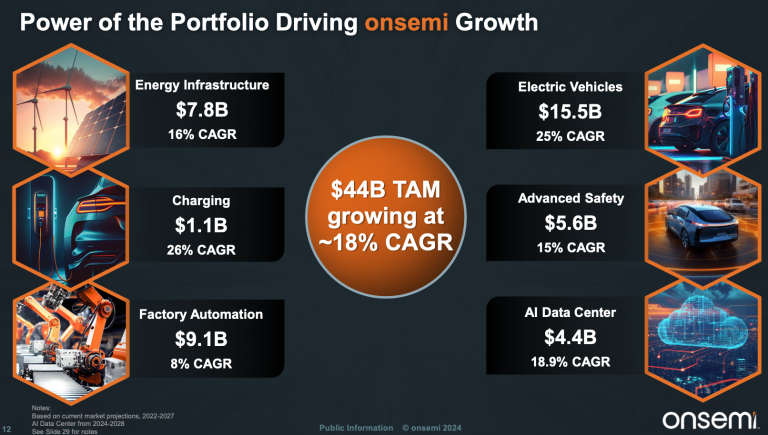1. The Financial Sector Explained: How Finance Powers the Economy
Welcome to the engine room of the global economy. The financial sector doesn’t manufacture goods or write code, but without it, modern commerce grinds to a halt.
If you are new to investing, understanding this sector is essential. It is the circulatory system that moves capital—the lifeblood of economic growth. More than just banks and insurance companies, the financial sector represents a complex ecosystem that facilitates everything from your morning coffee purchase to multi-billion-dollar corporate acquisitions.
What Is the Financial Sector?
At its core, the financial sector connects those who have money (savers and investors) with those who need money (borrowers, corporations, and governments). This process is called financial intermediation.
Imagine you deposit $1,000 into your bank. The bank pools your money with others and lends it to a small business looking to expand. The business grows, hires employees, and repays the loan with interest. The bank profits, and your money is put to work. This cycle drives the economy.
But financial intermediation goes far beyond simple lending. Consider these additional examples:
- Capital Allocation: When you buy shares of Apple stock, you’re providing capital that the company can use for research and development, enabling innovation that benefits society.
- Risk Transfer: Insurance companies pool premiums from millions of customers to pay claims when disasters strike, spreading risk across the entire customer base.
- Price Discovery: Stock markets help determine the fair value of companies, directing investment toward the most promising opportunities.
- Liquidity Creation: Banks transform illiquid assets (like mortgages) into liquid deposits, allowing you to access your money on demand.
The Historical Evolution
The modern financial system didn’t emerge overnight. Its development reflects centuries of economic evolution:
Ancient Origins: The earliest banks appeared in medieval Italy, where merchants needed ways to safely transfer money across trade routes. The Medici Bank, established in 1397, pioneered many practices still used today.
Industrial Revolution: As factories required massive capital investments, stock exchanges emerged to pool investor funds. The New York Stock Exchange, founded in 1792, became the epicenter of American capitalism.
20th Century Innovation: The Federal Reserve System (1913) brought central banking to America. The Securities and Exchange Commission (1934) introduced investor protection after the 1929 crash. The Bretton Woods Agreement (1944) established the post-war monetary system.
Digital Age: The late 20th and early 21st centuries brought electronic trading, derivatives markets, and fintech disruption, transforming how financial services operate.
The Key Players
The sector is diverse, encompassing multiple specialized institutions:
1. Commercial Banks
Traditional intermediaries like JPMorgan Chase, Bank of America, and Wells Fargo.
Core Functions:
- Accept deposits and provide checking/savings accounts
- Make loans to individuals and businesses
- Provide payment services (debit cards, wire transfers)
- Offer basic investment products
Revenue Sources: Net interest income (spread between borrowing and lending rates), fees for services, and trading income.
Key Metrics: Net interest margin, return on assets (ROA), return on equity (ROE), efficiency ratio.
2. Investment Banks
Specialized institutions like Goldman Sachs, Morgan Stanley, and Credit Suisse.
Core Functions:
- Underwrite securities offerings (IPOs, bond issuances)
- Provide merger and acquisition advisory services
- Trade securities for institutional clients
- Offer wealth management for high-net-worth individuals
Revenue Sources: Advisory fees, underwriting fees, trading commissions, and asset management fees.
3. Insurance Companies
Risk managers like Progressive, Berkshire Hathaway’s insurance units, and MetLife.
Types:
- Property & Casualty: Auto, home, and commercial insurance
- Life & Health: Life insurance, health insurance, annuities
- Reinsurance: Insurance for insurance companies
Business Model: Collect premiums, invest the float (money held before paying claims), and profit from both underwriting and investment returns.
4. Asset Managers
Investment specialists like BlackRock, Vanguard, and Fidelity.
Services:
- Mutual funds and ETFs for retail investors
- Institutional portfolio management
- Alternative investments (hedge funds, private equity)
- Retirement plan administration
Revenue Model: Management fees based on assets under management (AUM), performance fees, and administrative charges.
5. Fintech & Payment Networks
Technology-driven companies like Visa, Mastercard, PayPal, and Square.
Innovation Areas:
- Digital payments and mobile wallets
- Peer-to-peer money transfers
- Cryptocurrency and blockchain applications
- Robo-advisors for automated investing
- Alternative lending platforms
Specialized Financial Institutions
Credit Unions
Member-owned cooperatives that often offer better rates and lower fees than traditional banks, serving specific communities or employee groups.
Real Estate Investment Trusts (REITs)
Companies that own and operate income-generating real estate, allowing investors to gain exposure to property markets without direct ownership.
Broker-Dealers
Firms that execute securities transactions for clients and may also trade for their own accounts. Examples include Charles Schwab, TD Ameritrade (now part of Schwab), and E*TRADE.
Private Equity and Venture Capital
Specialized investment firms that provide capital to private companies, often taking active roles in management and strategic direction.
Finance in the Stock Market
In the stock market, the financial sector is one of the 11 Global Industry Classification Standard (GICS) sectors. It typically makes up about 13% of the S&P 500 index by market capitalization, though this percentage fluctuates with market conditions.
Sub-sectors within Financials:
- Banks (largest component): Commercial banks, thrifts, and mortgage finance companies
- Insurance: Life, health, property & casualty, and reinsurance companies
- Capital Markets: Investment banks, broker-dealers, and asset managers
- Consumer Finance: Credit card companies, consumer lenders, and other finance companies
- Mortgage REITs: Companies that invest in mortgages and mortgage-backed securities
Geographic Distribution: While U.S. financial companies dominate global markets, significant players exist worldwide—from European banks like ASML and UBS to Asian giants like Tencent’s financial services division.
The Regulatory Landscape
Financial services operate under extensive regulation designed to protect consumers, ensure systemic stability, and maintain market integrity.
Key U.S. Regulators:
- Federal Reserve: Monetary policy, bank supervision, financial system stability
- FDIC: Deposit insurance, bank examinations
- SEC: Securities markets, investment advisers, mutual funds
- CFTC: Derivatives and commodities markets
- OCC: National bank supervision
- State Regulators: Insurance companies, state-chartered banks
Major Regulatory Frameworks:
- Dodd-Frank Act (2010): Post-financial crisis reforms including the Volcker Rule and stress testing
- Basel III: International banking regulations focusing on capital adequacy
- Sarbanes-Oxley Act (2002): Corporate governance and financial reporting standards
- Bank Secrecy Act: Anti-money laundering requirements
Why Analyze Financials?
As an investor, the financial sector offers unique characteristics:
Cyclicality
Financial stocks are highly sensitive to the economic cycle. They boom when the economy expands and struggle during recessions. This sensitivity stems from:
- Credit Quality: Economic downturns increase loan defaults
- Loan Demand: Business expansion drives borrowing; recessions reduce it
- Net Interest Margins: Interest rate changes directly impact profitability
Leverage
Financial institutions use significant leverage (borrowed money) to generate returns. Banks typically operate with debt-to-equity ratios of 9:1 or higher. This magnifies gains but also increases risk, making financial stocks more volatile than the broader market.
Regulation
Heavy regulation provides stability but can limit growth and flexibility. New regulations can significantly impact profitability, as seen with the Volcker Rule’s effect on trading revenues.
Interest Rate Sensitivity
Most financial companies are highly sensitive to interest rate changes:
- Banks: Generally benefit from rising rates (higher net interest margins)
- Insurance Companies: Mixed effects—higher investment returns but potential policy surrender increases
- REITs: Often hurt by rising rates as their dividend yields become less attractive relative to bonds
Macroeconomic Factors and Financial Performance
Interest Rate Environment
- Rising Rates: Generally positive for banks (higher margins), mixed for insurers, negative for REITs
- Falling Rates: Can compress bank margins but may boost loan demand and reduce credit losses
- Yield Curve Shape: A steep curve (large spread between short and long rates) benefits banks
Economic Growth
- GDP Growth: Drives loan demand, reduces credit losses, increases trading activity
- Employment Levels: Low unemployment typically means fewer loan defaults
- Consumer Confidence: Affects demand for mortgages, credit cards, and investment services
Inflation
- Moderate Inflation: Often positive for financial stocks as nominal growth increases
- High Inflation: Can erode real returns and lead to aggressive central bank responses
- Deflation: Particularly harmful as it increases real debt burdens and may signal economic weakness
Technology’s Transformation of Finance
The financial sector is experiencing unprecedented technological disruption:
Digital Banking
Traditional banks are investing billions in digital transformation to compete with fintech startups. Mobile banking, AI-powered customer service, and data analytics are becoming standard.
Blockchain and Cryptocurrency
While still evolving, blockchain technology promises to revolutionize payments, trade finance, and record-keeping. Central banks are exploring digital currencies.
Artificial Intelligence
AI applications include:
- Fraud Detection: Real-time transaction monitoring
- Credit Scoring: Alternative data sources for lending decisions
- Algorithmic Trading: High-frequency trading strategies
- Robo-Advisors: Automated investment management
Open Banking
Regulatory initiatives allowing third-party providers to access bank data (with customer consent) are creating new competitive dynamics and partnership opportunities.
Global Perspectives
Financial markets are increasingly interconnected, making global awareness essential:
Emerging Markets
Countries like China, India, and Brazil represent high-growth opportunities but also carry higher risks from political instability, currency fluctuations, and less developed regulatory frameworks.
European Banking
European banks face unique challenges including negative interest rates, Brexit implications, and sovereign debt concerns in some countries.
Asian Financial Centers
Hong Kong, Singapore, and Tokyo serve as crucial financial hubs, with each offering different advantages for international business.
Investment Considerations and Risks
Sector-Specific Risks
- Credit Risk: The possibility that borrowers won’t repay loans
- Market Risk: Fluctuations in trading and investment portfolios
- Operational Risk: Fraud, system failures, and human errors
- Regulatory Risk: Changes in rules that could impact profitability
- Liquidity Risk: Inability to meet short-term obligations
- Reputation Risk: Scandals that damage customer trust and business
Valuation Challenges
Traditional valuation metrics may not apply to financial companies:
- Price-to-Book Ratio: More relevant than P/E for banks
- Return on Equity: Key profitability measure
- Tangible Book Value: Book value excluding intangible assets
- Price-to-Tangible Book: Important for bank valuations
Due Diligence Factors
- Asset Quality: Review of loan portfolios and investment holdings
- Capital Adequacy: Regulatory capital ratios and stress test results
- Management Quality: Track record and strategic vision
- Competitive Position: Market share and competitive advantages
- Regulatory Compliance: History of regulatory issues
Current Trends and Future Outlook
Consolidation
The sector continues to consolidate as smaller institutions struggle with regulatory costs and competitive pressures. This creates opportunities for acquirers with strong capital positions.
ESG Integration
Environmental, Social, and Governance factors are becoming increasingly important, with financial institutions facing pressure to consider climate risks and social impact in their lending and investment decisions.
Digital Transformation
The COVID-19 pandemic accelerated digital adoption, forcing traditional institutions to adapt quickly. Those that successfully navigate this transition will likely emerge stronger.
Regulatory Evolution
Post-pandemic policy responses, including unprecedented monetary and fiscal stimulus, may lead to new regulatory frameworks addressing digital currencies, climate risk, and systemic stability.
The Road Ahead
Understanding the financial sector requires more than memorizing definitions—it demands appreciating the complex interplay between economic cycles, regulatory environments, and technological innovation. The sector’s inherent leverage and cyclicality create both opportunities and risks that savvy investors can navigate with proper analysis.
In this series, we won’t just describe the sector; we will teach you how to analyze it. You’ll learn how to read a bank’s annual report, apply specialized valuation techniques, and understand how macroeconomic factors like interest rates impact these companies. We’ll explore case studies of successful and failed financial institutions, examine the role of regulation in shaping industry dynamics, and provide frameworks for evaluating investment opportunities in this critical sector.
The financial sector may not manufacture products you can touch, but it manufactures something arguably more important: the trust, efficiency, and capital flows that make modern economic life possible. Master its analysis, and you’ll have unlocked one of the most important pieces of the investment puzzle.



